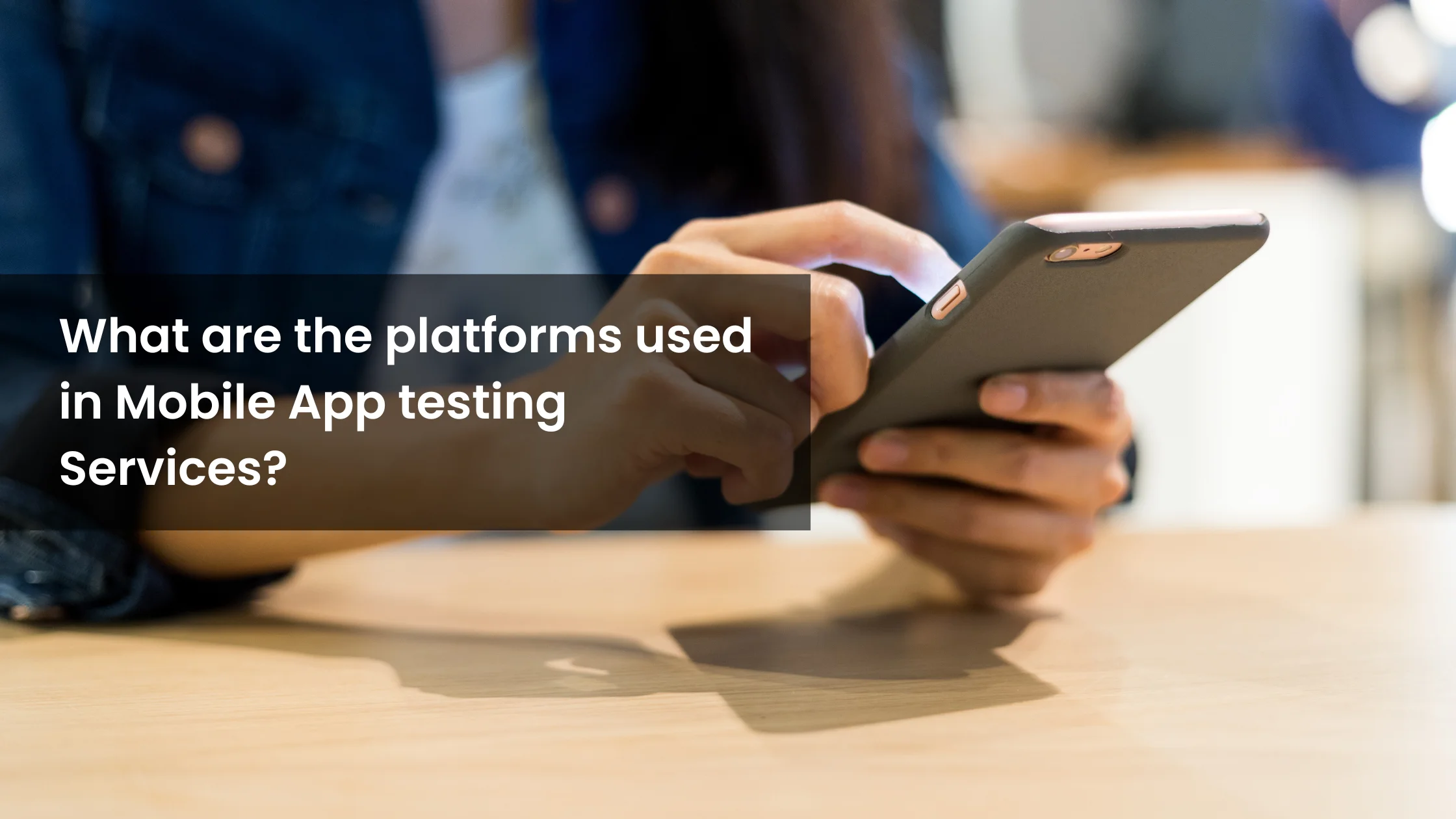Poor layouts, confusing navigation, or inconsistent performance frustrate users, leading to drop-offs and negative feedback. That’s where mobile UI/UX testing comes in. It ensures your app functions properly and feels great to use.
This article shares the top UI/UX testing practices that every QA team, developer, and product manager should follow to create delightful mobile experiences.
What Is Mobile UI/UX Testing?
UI Testing verifies how the app looks:
- Layouts, icons, typography, alignment
- Visual consistency across devices and resolutions
UX Testing focuses on how the app behaves:
- Ease of navigation
- Task flow, intuitiveness, and accessibility
Together, they answer:
- Is the app easy to navigate?
- Does it behave consistently on all devices?
- Can users complete their goals without confusion?
Key Goals of Mobile UI/UX Testing
| Goal | Why It Matters |
|---|---|
| Validate visual consistency with designs | Prevents misaligned buttons, colors, or font errors |
| Ensure cross-device and resolution compatibility | Offers consistent experience across screen sizes |
| Test navigation flow | Helps users complete tasks without frustration |
| Ensure accessibility | Makes apps usable for all — including differently-abled users |
| Test responsiveness | Verifies fast load times and smooth animations |
| Confirm transitions and gestures | Delivers fluid interaction through touch responses |
Best Practices for Mobile UI/UX Testing
1. Test on Real Devices
Simulators help, but only real devices reveal:
- Performance bottlenecks
- Touch responsiveness
- Device-specific layout glitches
Recommended Platforms: BrowserStack, Kobiton
2. Ensure Cross-Device and OS Consistency
Test on:
- Small, medium, large phones & tablets
- Android/iOS — latest + previous 2–3 versions
- Different DPI settings and screen orientations
3. Perform usability testing
Observe real users completing tasks like sign-up, checkout, or content discovery.
Questions to ask:
- Is navigation intuitive?
- Do users get stuck or abandon the app?
- Are CTAs clearly visible and usable?
Tools: Maze, Lookback, moderated usability sessions
4. Validate Accessibility Standards
Follow WCAG 2.1 and Material Design accessibility principles:
- Screen reader support (TalkBack, VoiceOver)
- Color contrast checks
- Large enough tap targets
- Keyboard + gesture navigation
5. visual regression testing
Detect unwanted visual changes:
- Misaligned buttons
- Broken layout on specific devices
- Icon or font mismatches
Tools: Applitools, Percy, VisualTest
6. Test Touch Interactions & Gestures
Verify:
- Swipes, taps, long presses
- Smooth scroll, drag-and-drop
- Gesture conflicts and response timing
7. Simulate Network Conditions
Check UI under:
- Slow networks (2G/3G)
- Offline mode
- Loading delays
Tip: Show skeleton loaders instead of blank screens.
8. Prioritize Above-the-Fold Design
Ensure the most important content and CTAs are visible without scrolling — especially on smaller screens.
Recommended Tools for Mobile UI/UX Testing
| Tool | Purpose |
|---|---|
| BrowserStack | Real device cloud testing |
| Applitools | AI-powered visual regression |
| Maze | Remote usability testing |
| Percy | Snapshot-based UI testing |
| Lookback | Live user session recording |
| Google Lighthouse | Performance & accessibility audits |
Example: Food Delivery App (India Market)
- Tested across 20+ devices and 3 resolutions
- Fixed 17 UI bugs affecting Android users
- Reduced drop-offs by 32% on the payment screen
- Achieved 96% accessibility compliance across platforms
Frequently Asked Questions (FAQs)
Q1: What’s the difference between UI and UX testing?
A: UI testing focuses on the app’s look and design accuracy. UX testing ensures smooth interaction and user satisfaction while navigating and using the app.
Q2: Can UI/UX testing be automated?
A: Some parts (e.g., layout checks, visual diffing) can be automated. Usability testing is best done manually with real users.
Q3: How early should UI/UX testing begin?
A: Ideally from the prototype or wireframe stage and continued throughout development and post-launch.
Q4: Is accessibility testing part of your UX validation to comply with WCAG and OS-specific standards.
part of UI/UX testing?
A: Yes. Accessibility checks are integral to UX testing and help make the app inclusive for all users.
Q5: What tools help cross-platform UI testing?.
A: BrowserStack, Kobiton, Percy, and Applitools offer device and platform coverage.
Q6: Can visual bugs affect user retention?
A: Definitely. Misaligned buttons, layout issues, or slow gestures lead to poor first impressions and lower engagement.
Q7: Should I test UI under poor network conditions?
A: Yes. UI responsiveness and loading states in 2G/3G or offline conditions are critical to user experience.
Q8: How do I know if my app's design is intuitive?
A: Use moderated usability testing with target users and analyze their task completion success rate and behaviour.
Conclusion: Design It Right, Test It Smart
A visually appealing app that fails to deliver on usability is still a failure. Mobile UI/UX testing ensures apps don’t just look great — they feel right and work flawlessly across all touchpoints.
At Testriq QA Lab LLP, we integrate UI/UX testing into every stage of our mobile QA process — ensuring your app delivers excellence across devices and audiences.
 Hello there, fellow app enthusiast! So, you've developed a killer mobile app. It's sleek, it's functional, and you can't wait to unleash it upon the world. But wait—before you do that, there's a little thing called mobile app testing that you need to consider. Testing ensures your app runs smoothly across all devices and platforms, saving you from the embarrassment of crashes and bugs. In this post, we'll walk you through the main platforms used in mobile app testing services, with a sprinkle of humour and a dash of technical insight.
Hello there, fellow app enthusiast! So, you've developed a killer mobile app. It's sleek, it's functional, and you can't wait to unleash it upon the world. But wait—before you do that, there's a little thing called mobile app testing that you need to consider. Testing ensures your app runs smoothly across all devices and platforms, saving you from the embarrassment of crashes and bugs. In this post, we'll walk you through the main platforms used in mobile app testing services, with a sprinkle of humour and a dash of technical insight. Hey there, app developer extraordinaire! Ready to dive into the world of mobile app testing and find out which companies are ruling the roost? We know, you’ve poured your heart, soul, and countless cups of coffee into your mobile app. Now, it's time to make sure it’s flawless before it hits the app stores. But with so many testing companies out there, how do you choose the best one? Let’s break it down and make this journey a bit more fun!
Hey there, app developer extraordinaire! Ready to dive into the world of mobile app testing and find out which companies are ruling the roost? We know, you’ve poured your heart, soul, and countless cups of coffee into your mobile app. Now, it's time to make sure it’s flawless before it hits the app stores. But with so many testing companies out there, how do you choose the best one? Let’s break it down and make this journey a bit more fun! So, you're about to launch your killer mobile app, huh? Congratulations! But wait, before you pop that champagne, let’s talk about something crucial: mobile app testing. You see, behind every successful app is a team of diligent testers using a suite of tools to ensure it works perfectly. Let's dive into the world of mobile app testing and discover how many tools are really involved.
So, you're about to launch your killer mobile app, huh? Congratulations! But wait, before you pop that champagne, let’s talk about something crucial: mobile app testing. You see, behind every successful app is a team of diligent testers using a suite of tools to ensure it works perfectly. Let's dive into the world of mobile app testing and discover how many tools are really involved.